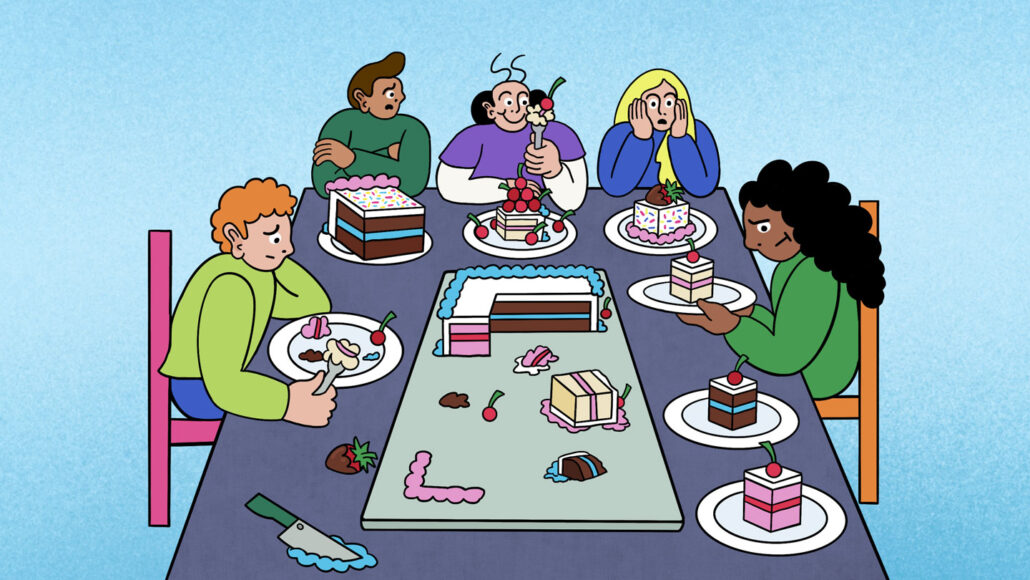Questions for ‘Cake-cutting math offers lessons that go far beyond dessert plates’

To study the math of fairness, a cake can stand in for anything that can be divided among people. That includes land, time or limited resources.
MADELINE MCMAHON
To accompany ‘Cake-cutting math offers lessons that go far beyond dessert plates’
SCIENCE
Before Reading:
- Imagine you and a friend agree to share a piece of cake. How might you divide it up so you’re both happy with the outcome? What would you do differently if you were sharing the cake among three people?
- What does it mean to divide something fairly among multiple people? How do you decide what’s “fair”? Does everyone have to agree?
During Reading:
- When mathematicians and others study cake-cutting, what bigger question are they trying to answer?
- List at least three real-world situations that involve how to fairly divide up a limited resource.
- Describe in your own words what an algorithm is.
- As described in the story, what is the simplest way to divide a cake fairly between two people?
- If two people use the I-cut-you-choose method with a uniform cake, how will their resulting pieces compare? How might this be different if the cake is not all the same?
- What is one difference between the I-cut-you-choose method and the lone-divider method?
- In the lone-divider method, which person (A, B or C) gets the first chance to pick a piece?
- How do the lone-divider method and the last-diminisher method differ in terms of the number of people involved?
- What are two weaknesses of the last-diminisher method, as described in the story?
- According to Biaoshuai Tao, how might someone use dishonesty to try to get an unfair advantage?
After Reading:
- With two friends or classmates, try out the lone-divider method, as described at the beginning of the section called “More eaters, more cuts.” Instead of cake, you will be dividing up the following household chores:
- Sweeping the floors daily
- Cleaning the kitchen daily
- Cleaning a large bathroom weekly
- Cleaning a small bathroom weekly
- Taking out the garbage weekly
- Dusting the entire house/apartment monthly
The person whose name comes first in the alphabet will be the divider. They should divide the chores into what they view as three equal responsibilities. Going in alphabetical order, the other two people should evaluate and choose as described in the story. At the end, write down everyone’s final chore assignments. (If you are by yourself, work through this same process on paper with three imaginary people.)
Then answer the following questions: Were the chore groupings at the end the same as what the first person set? If not, how did they change? At the end, how does each person feel about their assignment, and do they feel it represents a fair share? What aspects of the chores did you use when deciding how to divide them up (for example, frequency, difficulty, etc)? How easy or difficult was this process overall? What challenges or surprises did you run into along the way? How do you think this process might change if you were dividing up something more permanent, such as land?